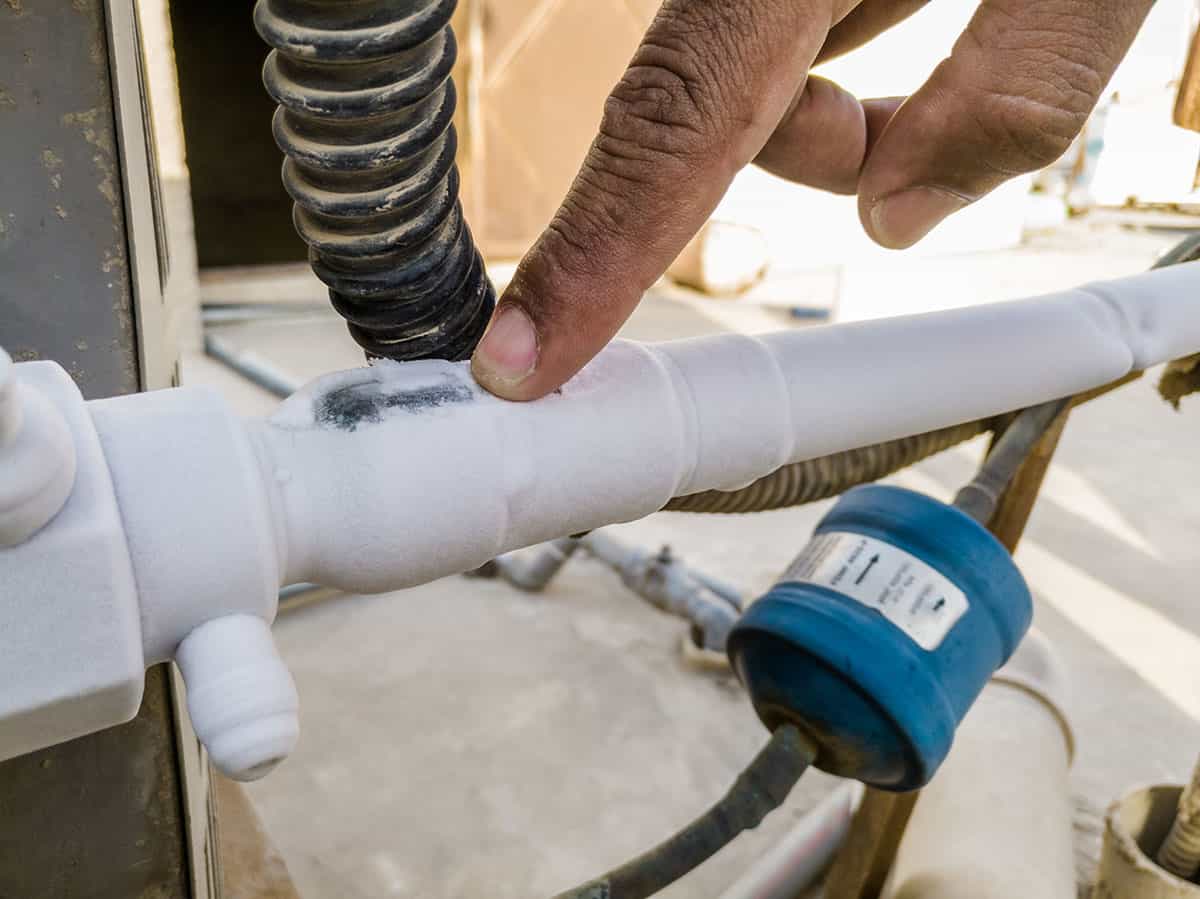Steps to Follow When Your AC Pipe is Frozen: Complete Manual
Steps to Follow When Your AC Pipe is Frozen: Complete Manual
Blog Article
Here in the next paragraph you'll find lots of really good details all about Air Conditioner Frozen? How To Fix your Frozen AC Line.

Introduction
Discovering that your air conditioning pipeline is iced up can be worrying, particularly during hot summertime when you count on your a/c the most. Comprehending what to do in such a scenario is essential to avoid more damage to your cooling system and ensure your comfort inside your home.
Comprehending the Causes
Numerous elements can add to the cold of an a/c pipe. Comprehending these causes can help you attend to the concern efficiently.
Lack of Airflow
One usual source of an icy AC pipeline is inadequate air movement. When the air movement over the evaporator coil is restricted, it can cause the coil to go down below freezing temperature level, causing ice formation on the pipeline.
Reduced Refrigerant Levels
Insufficient cooling agent degrees in your air conditioning system can additionally lead to a frozen pipeline. Low cooling agent levels can create the pressure in the system to go down, resulting in the cold of moisture on the evaporator coil.
Winter Conditions
In colder environments, freezing temperature levels outside can add to the cold of air conditioner pipelines. If your air conditioner system is not appropriately protected or if there are leaks in the ductwork, cold air can penetrate the system, triggering the pipeline to ice up.
Dirty Air Filters
Dirty or clogged up air filters can restrict air movement in your a/c system, causing various problems, including a frozen pipeline. It's necessary to change or clean your air filters regularly to make sure correct air movement and avoid ice accumulation.
Signs of a Frozen Air Conditioner Pipe
Recognizing the signs of an icy air conditioner pipeline is crucial for prompt activity.
Decreased Airflow
If you notice a substantial reduction in airflow from your vents, it can suggest an icy pipe.
Ice Buildup on the Pipe
Noticeable ice accumulation on the cooling agent line or the evaporator coil is a clear indicator of an icy air conditioning pipeline.
Strange Sounds from the Unit
Uncommon audios, such as hissing or bubbling, originating from your air conditioner system can indicate that there's ice existing on the pipe.
Immediate Actions to Take
When faced with an icy air conditioner pipeline, it's necessary to act swiftly to stop more damage to your cooling system.
Turning off the air conditioning
The initial step is to switch off your air conditioning unit to stop the system from running and intensifying the problem.
Checking for Blockages
Evaluate the area around the interior unit for any type of blockages that may be blocking air flow, such as furnishings or drapes.
Thawing the Pipe
You can utilize mild approaches like placing towels soaked in warm water around the frozen pipe to assist thaw it gradually.
Safety nets
Taking safety nets can aid stay clear of future events of an icy air conditioner pipeline.
When DIY Methods Fail
If your efforts to thaw the pipeline or address various other problems are unsuccessful, it's time to employ an expert.
Value of Hiring a Professional HVAC Technician
A licensed HVAC specialist has the competence and tools necessary to detect and fix issues with your AC system securely and efficiently.
Regular Maintenance Checks
Set up regular upkeep contact a professional HVAC professional to guarantee that your AC system is running effectively.
Transforming Air Filters
Consistently replace or clean your air filters to stop airflow limitations and keep optimal performance.
Protecting Exposed Pipes
If your air conditioner pipes are subjected to chilly temperature levels, consider insulating them to avoid freezing throughout cold weather.
Looking For Professional Help
If DIY approaches fall short to resolve the problem or if you're uncertain about how to proceed, it's best to seek aid from a certified HVAC specialist.
Conclusion
Taking care of an icy AC pipeline can be a discouraging experience, however understanding just how to respond can assist minimize damage and recover comfort to your home. By comprehending the reasons, recognizing the indicators, and taking punctual activity, you can efficiently deal with the problem and protect against future incidents.
Frozen AC Line: Why It Happens & What To Do About It
A frozen AC line can be a rather peculiar sight in a place like Phoenix, Arizona where nothing ever freezes. In this post, we’ll discuss what makes an air conditioner line frozen – and what you can do about it.
Dirty Air Filters
Did you know that you should be cleaning or replacing your air filters on a monthly basis? Failing to do this can result in airflow issues that, in turn, cause your evaporator coils and lines to freeze over. You’ll notice a buildup of ice on both components, although the buildup on your pipes will, of course, be more evident unless you open your air condition up to reveal the coils.
What To Do About It
Give your air filter a good cleaning if it’s reusable. If not, replace the filter outright. Next, switch your air conditioner’s fan setting on and leave it there for 2-3 hours. This will draw warm air in, helping to thaw your evaporator coil. You can also check out this article for some tips on cleaning the coils themselves if you’d like to speed the process up. Before you switch the unit back to its normal state, make sure the supply vents are completely unobstructed and free of dust or other debris.
If you keep having this issue even after replacing your filters regularly, contact a local HVAC repair company and have them inspect your evaporator coil, ductwork, and any other components that may be at fault. If you live in the Phoenix, Arizona area, give American Home Water and Air a call.
Low Refrigerant Levels/Leakage
What To Do About It
Contrary to what air conditioner “recharge” companies often tell their clients about refrigerant, it should never need to be simply refilled. You see, refrigerant runs in what experts refer to as a “closed loop.” Refrigerant really shouldn’t be leaving that loop. If it is, you’ve got a leak.
Paying someone to come and pump more refrigerant into your system (aka “recharge” it) isn’t the solution. Doing that will simply kick the can down the road. Besides, refrigerant leaks can be harmful to the environment and people in your home.
Rather, you need to take care of the leak with the help of a technician. Check out this article for some more information about dealing with air conditioners that are leaking refrigerant. Before you contact a technician, switch your thermostat to the off position. Then, switch the fan setting on and let it run for 2-3 hours so the unit can thaw.
Improper Temperature Setting
Improper temperature settings can also cause a drop in your air conditioner’s pressure. What many people don’t realize is that air conditioners are actually designed to run when temperatures have fallen above roughly 60 degrees Fahrenheit. If you run the unit when it’s cold outside, you’ll run into many issues, including frozen components.

I hope you liked our article about What Do I Do If My AC Pipe Is Frozen. Thanks a lot for taking the time to read our short article. Are you aware of someone else who is occupied with the subject? Feel free to promote it. Thanks for your time spent reading it.
Call Today Report this page